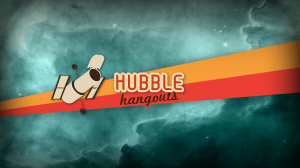In April, Hubble will celebrate a quarter-century in space. The telescope, launched into orbit in 1990, has become one of NASA’s most beloved and successful missions, its images changing our understanding of the universe and taking root in our cultural landscape. Hubble pictures have not only expanded our scientific knowledge, they have altered the way we imagine the cosmos to appear.

Hubble took its iconic “Pillars of Creation” image of these star-forming clouds of gas and dust in the Eagle Nebula in 1995. Credit: NASA, ESA, STScI, J. Hester and P. Scowen (Arizona State University)
Hubble’s prolonged success has been a testament to its innovative design, which allowed it to be periodically updated by astronauts with new equipment and improved cameras. Hubble has been able, to an extent, to keep up with technological changes over the past 25 years. The benefits are evident when comparing the images of the past and present.

This new image of the Eagle Nebula’s “Pillars of Creation” was taken in 2014 to launch Hubble’s year-long celebration of its 25th anniversary. The image was captured with Wide Field Camera 3, an instrument installed on the telescope in 2009. Credit: NASA, ESA, and the Hubble Heritage Team (STScI/AURA)
Hubble’s new instruments — specifically, the near-infrared capabilities of Wide Field Camera 3 — are what makes the Frontier Fields project possible. The faint infrared light of the most distant, gravitationally lensed galaxies sought in the Frontier Fields project would be beyond the reach of Hubble’s earlier cameras. Frontier Fields highlights Hubble’s continuing quest to blaze new trails in astronomy — and pave the path for the upcoming Webb Space Telescope — so it makes sense that its imagery is included in a collection of 25 of Hubble’s significant images, specially selected for the anniversary year.

Abell 2744, the first of the Frontier Fields to be imaged, is part of Hubble’s 25th anniversary collection of top images. The immense gravity of the foreground galaxy cluster warps space to brighten and magnify images of far-more-distant background galaxies. Credit: NASA, ESA, and J. Lotz, M. Mountain, A. Koekemoer, and the HFF Team (STScI)
The 25th birthday is a significant milestone, so Hubble is throwing a year-long celebration, with events happening in communities and online throughout 2015. Last week, Tony Darnell hosted a discussion of the beauty and scientific relevance of the Hubble 25th anniversary images, one of the many anniversary-themed Hubble Hangouts he’ll be doing as the months go on. To keep an eye on upcoming events, see the images, and learn about the science, visit our special 25th anniversary website, Hubble25th.org.

